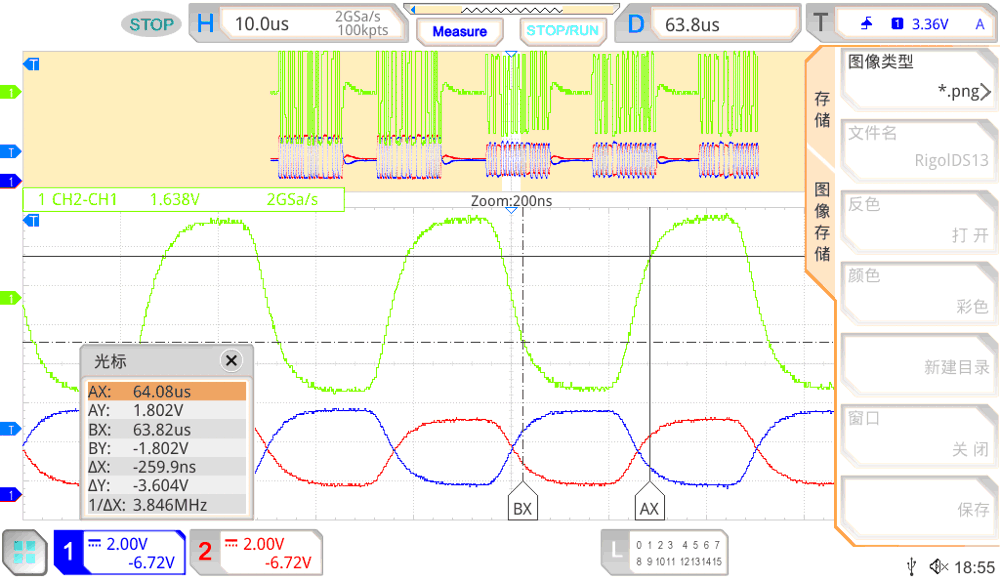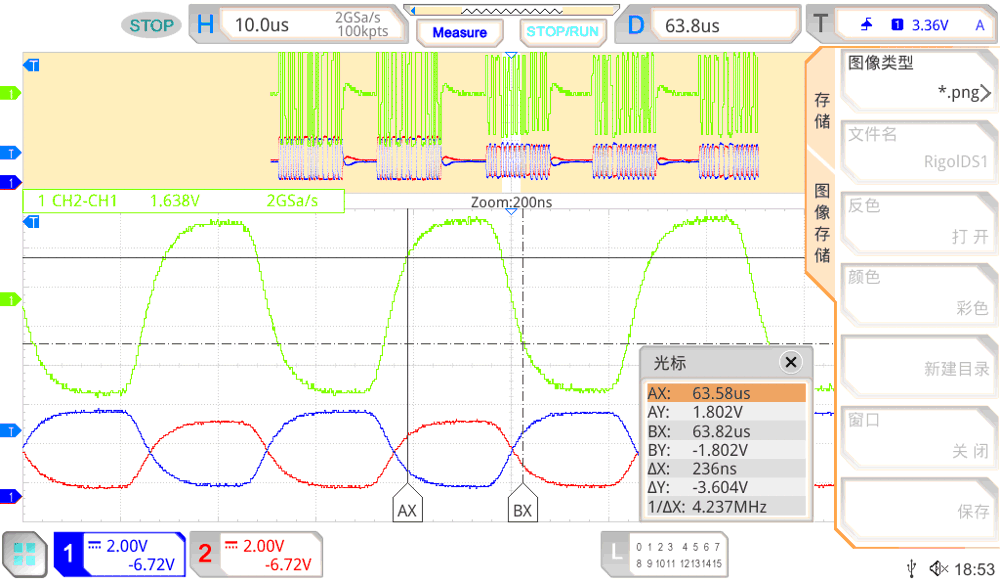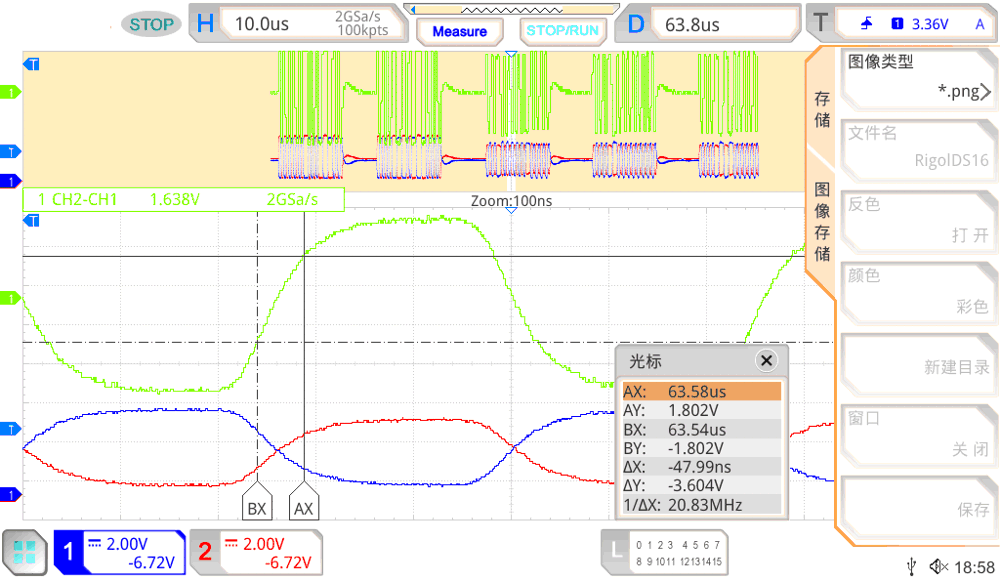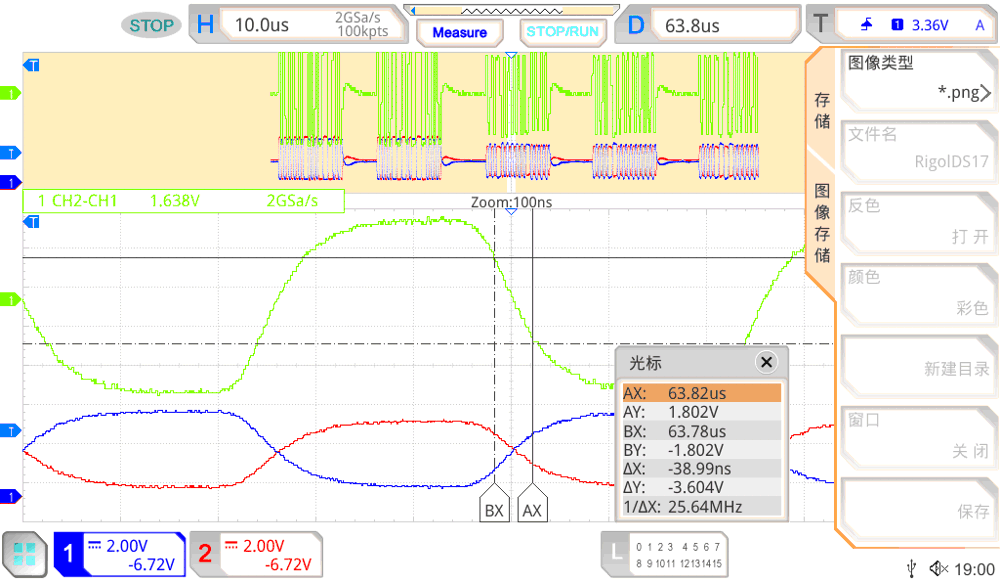TIDUF55 November 2023
3.4.2 Daisy Chain Signal Quality
This design uses a BMU (TIDA-010271) to communicate with BCU. The test point is in the BCU COMH port of BQ79600_0. The oscilloscope measures the COMP-COMN to check the positive pulse width, negative pulse width, rise slew rate, and fall slew rate.
Figure 3-17 through Figure 3-8 show the daisy chain waveforms.
 Figure 3-5 Positive Pulse-Width of Daisy
Chain
Figure 3-5 Positive Pulse-Width of Daisy
Chain Figure 3-6 Negative Pulse-Width of Daisy
Chain
Figure 3-6 Negative Pulse-Width of Daisy
Chain Figure 3-7 Raise Slew-Rate of Daisy
Chain
Figure 3-7 Raise Slew-Rate of Daisy
Chain Figure 3-8 Fall Slew-Rate of Daisy
Chain
Figure 3-8 Fall Slew-Rate of Daisy
ChainTable 3-18 lists daisy chain signal performance data.
Table 3-18 Daisy Chain Signal Performance
| PARAMETER | CONDITION | MIN | TEST DATA | MAX |
|---|---|---|---|---|
| Positive pulse width | Measure COMP-COMN from +1.8 V of rising edge to –1.8 V of next falling edge | 230 ns | 260 ns | 270 ns |
| Negative pulse width | Measure COMP-COMN from –1.8 V of falling edge to +1.8 V of next rising edge | 230 ns | 236 ns | 270 ns |
| Rise slew rate | Measure COMP-COMN from –1.8 V to +1.8 V of rising edge | 50 ns | ||
| Fall slew rate | Measure COMP-COMN from +1.8 V to –1.8 V of falling edge | 39 ns |